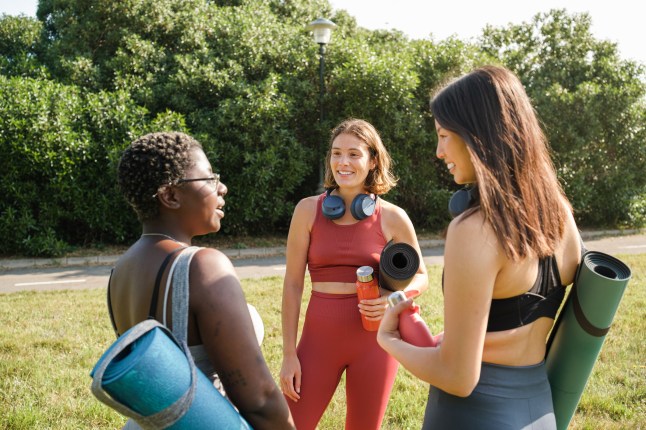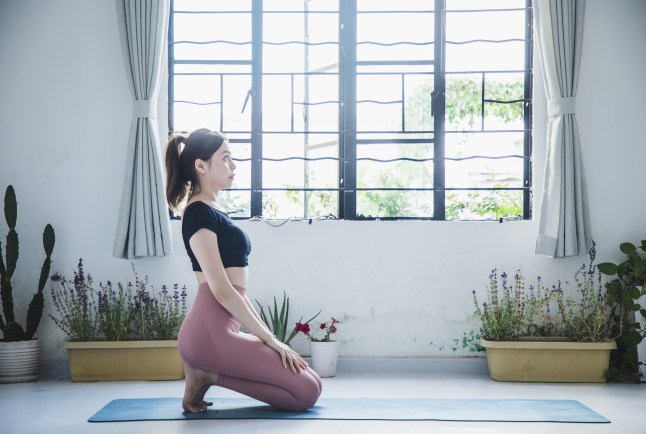
It’s takes just a matter of seconds to determine if you’re as fit and healthy as you should be for you age.
But this test isn’t about long you can run for, or how many sit ups you can do, it’s much simpler.
All you have to do is go from kneeling to a squat position in one fluid movement, by jumping from your knees to the soles of your feet.
TikToker Amelia (@ameelzonweelz) attempted this on the social media app, and it hit more than six million views. She captioned it: ‘Apparently if you can do this, your biological age is under 30.’
But not everyone found it quite so easy. One commenter wrote: ‘I can’t even stand up without sounding like a glow stick being activated.’
‘I went to try it, I laughed, I attempted, I fell on my face and gave myself hiccups,’ said another.
What can this test tell you about your body?
For Dr Tang, a GP at Pall Mall Medical, this test is all about strength and stability.
‘This movement checks lower body strength, explosive power, flexibility in the hips, knees and ankles, balance, and core stability,’ he tells Metro. ‘It’s a quick way to see how well your body works as a whole.’
Dr Lawrence Cunningham agrees, explaining that the test examines how well your muscles work together to move you from one position to the other.
‘As we age, these things naturally decline unless we actively work to keep them up, so this test separates the active from the inactive,’ Dr Tang adds.
How difficult should it feel?
Dr Cunningham, for UK Care Guide, tells Metro that for anyone under 30, this should feel like quite a simple test to complete.
However he warns that it’s not a ‘strict divider’.
‘Younger people might find this test easier because they tend to have more muscle strength and flexibility,’ he says. ‘However, I’ve seen plenty of over 30s and even many over 50s who maintain excellent fitness levels and can perform this test with ease.’

There are of course some groups of people who will struggle with this test, even if they are younger.
‘People with joint issues, injuries, excess weight, or a sedentary lifestyle might find it hard,’ Dr Tang explains. ‘Not being used to explosive movement or lacking coordination can make it tricky too.’
Are tests like this effective?
‘These tests mimic real-life movements and show how well your body handles basic tasks,’ Dr Tang says. ‘They’re easy to do anywhere and often reveal issues before you feel them day to day.’
He adds that you should always approach these tests with caution if you have any health concerns, and seeing a doctor is better than overexerting yourself. Health screenings are a much more comprehensive alternative.
Dr Cunningham adds that these tests can be a great indicator of your muscle strength and endurance which can prove to be important indicators of your overall health.
What if you fail this test?
If you can’t do this test successfully, Dr Tang says it could be a sign you’re ‘losing strength or mobility, possibly from inactivity or poor movement habits’.
If you are under 30, and struggle to complete it or fail the test completely, he adds this is a ‘big red flag’.
‘Your body should still be in top condition, so struggling here likely means you’re too inactive or lacking strength and flexibility,’ he says. ‘Time to move more, build strength, and improve mobility before it becomes a long-term issue.’
Dr Cunningham suggests strength training or yoga as a good starting point to help improve your strength.
So, will you give it a go?
Do you have a story to share?
Get in touch by emailing MetroLifestyleTeam@Metro.co.uk.